This article describes accessing and using the Cardiovascular Risk Assessment Calculator in Bp Premier.
Cardiovascular Disease Risk Assessment Calculator in Orchid SP2 and later
In Orchid SP2, when accessing Clinical > Cardiovascular Risk from the patient record, an embedded browser will open the Australian CVD Risk (AusCVDRisk) calculator. AusCVDRisk is a comprehensive tool designed to assist health professionals in assessing, communicating, and managing cardiovascular disease risk.
The AusCVDRisk tool is recommended for use in the following individuals who do not have known atherosclerotic cardiovascular disease:
- All people aged 45-79 years
- People with diabetes aged 35-79 years
- First Nations people aged 30-79 years (assess individual risk factors 18-29 years).
To learn more about how this calculator works, refer to the Australian Guidelines for assessing and managing cardiovascular disease risk.
- From the patient record, select Clinical > Cardiovascular risk. The CVD Check screen will appear.
- Enter a value for each Variable, then click Calculate. The Consider Reclassification Factors screen will appear
- If applicable, select reclassification factors that are relevant to the patient. Reclassification factors are most beneficial when an individual's risk level is near the risk threshold.
- To proceed to the results page, click one of the following options: Continue without reclassifying, Reclassify up to intermediate risk, or Reclassify to high risk.
- The CVD Risk results will be displayed, along with information to assist you in discussing the results with the patient, as well as resources promoting healthy habits and behaviours that can help lower the risk.
- Close the CVD Check browser. The Cardiovascular Risk screen will appear.
- In the Enter probability of having cardiovascular disease in the next five years field, enter the CVD Risk value and click Save.
- The CVD Risk results will be recorded in Observations > CVD Risk, and an Action will be recorded in Today’s Notes.
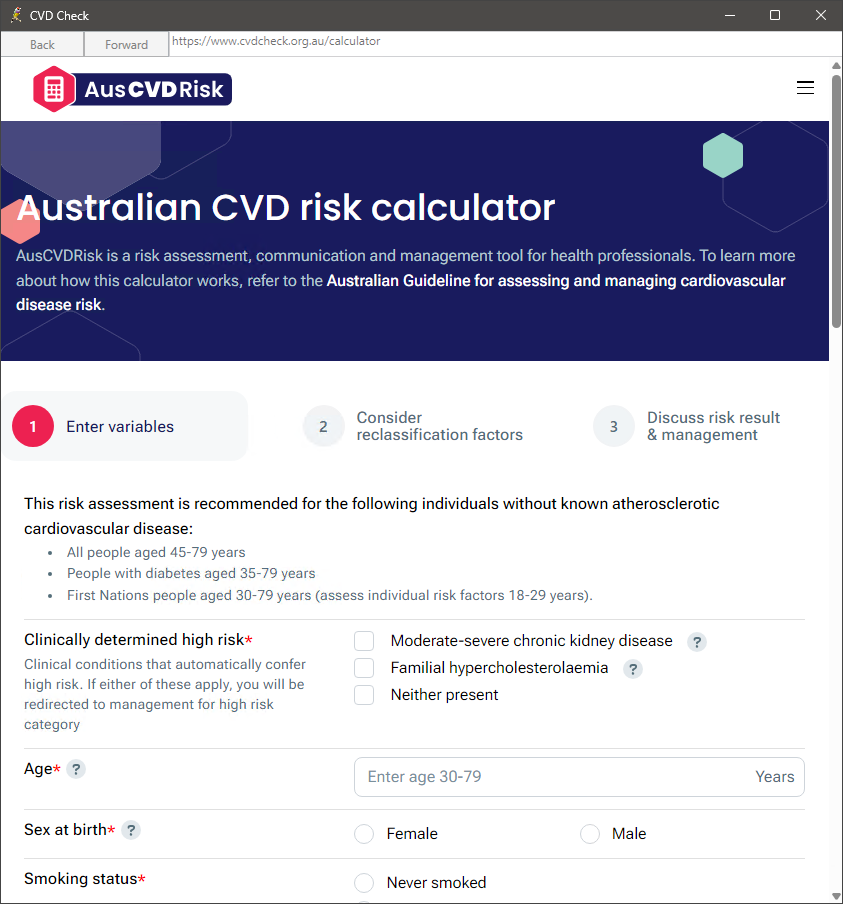
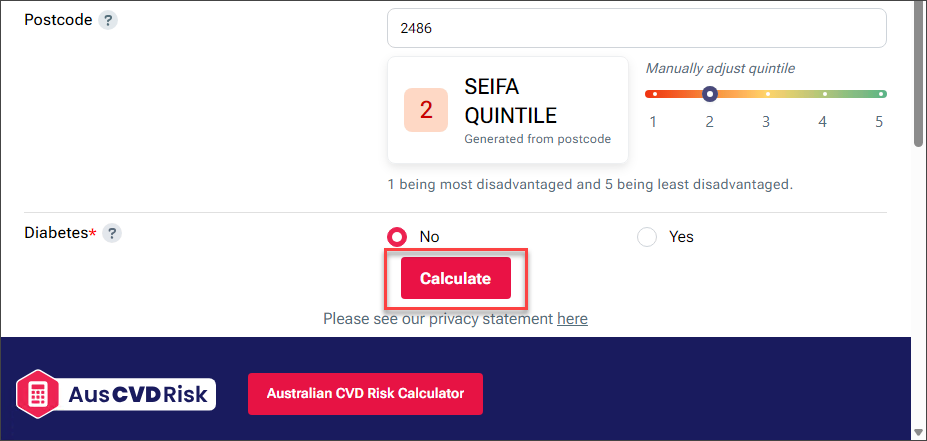
EXAMPLE If the patient is of East Asian ethnicity (Chinese, Japanese, Korean, Taiwanese, or Mongolian), you may consider reclassifying them down a category, or up a category if they have a family history of premature cardiovascular disease.
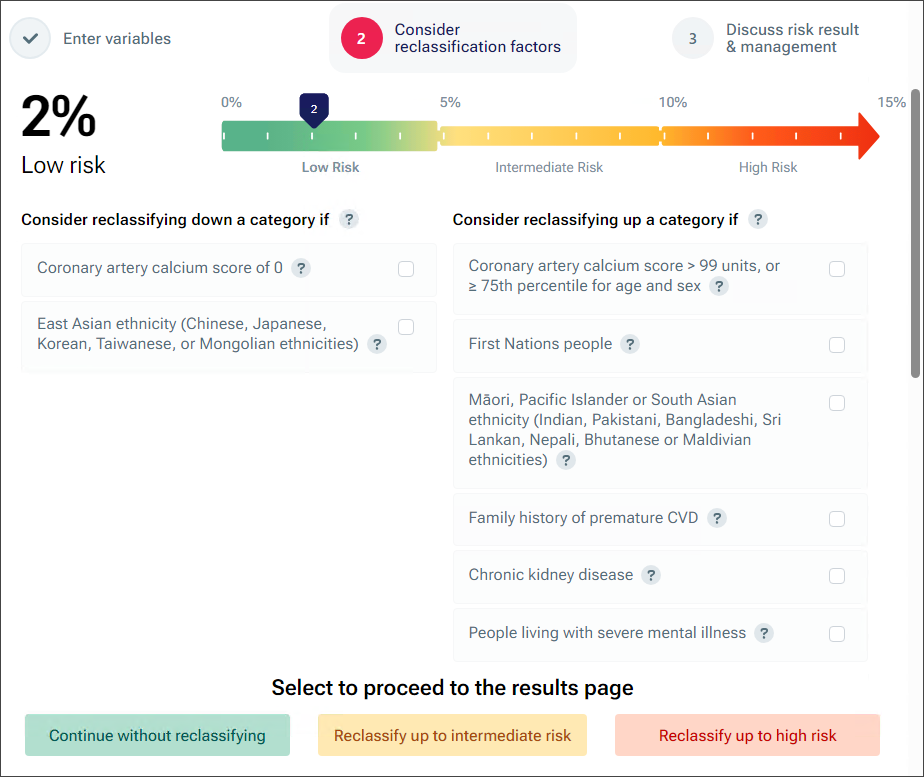
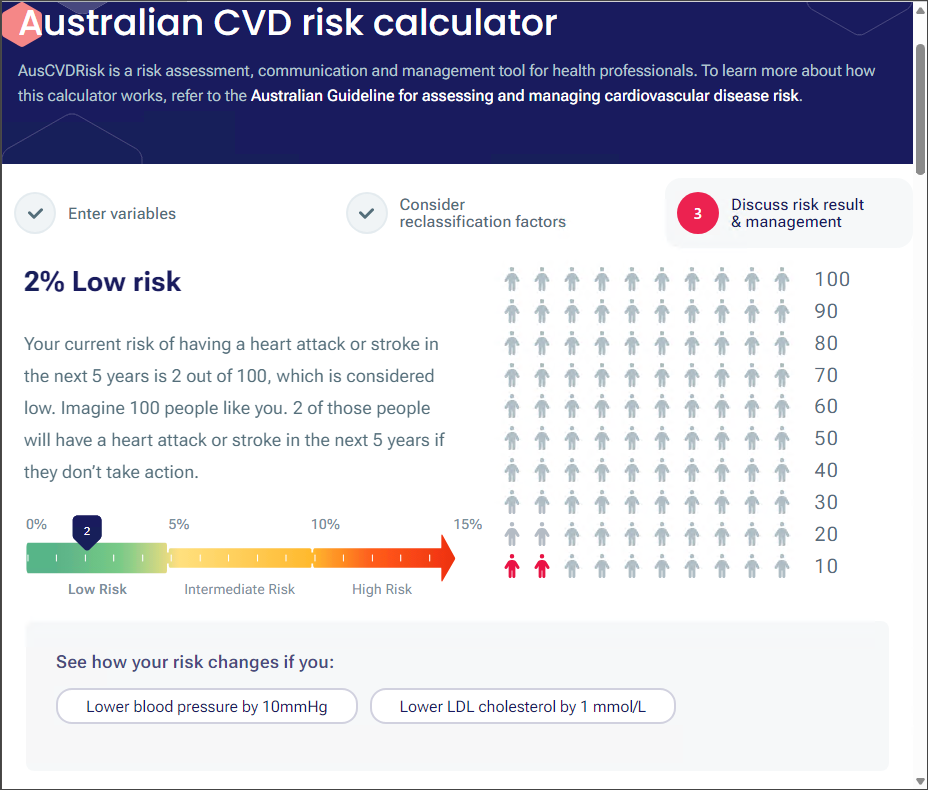

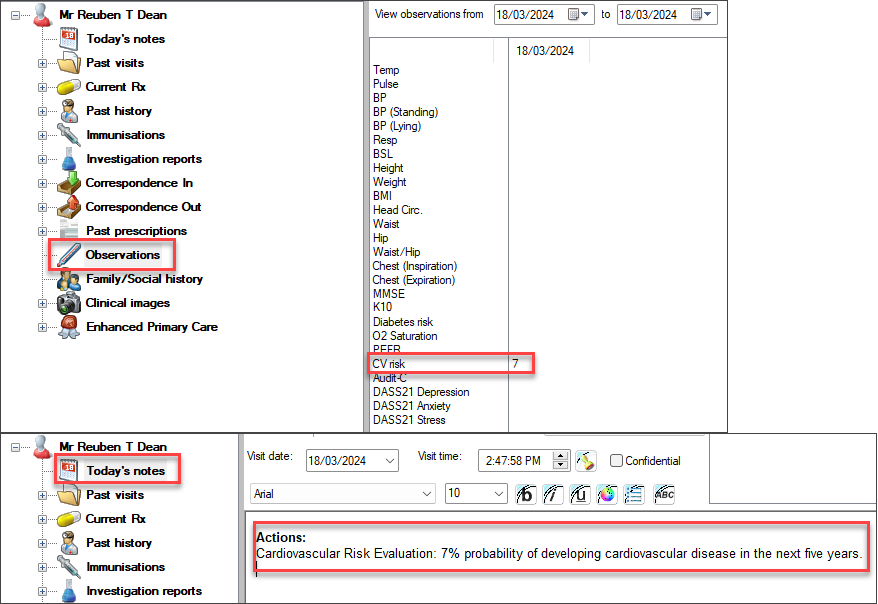
CVD Risk Calculator and WebView2
To access the Australian CVD Risk Calculator in Bp Premier version Orchid SP2 or later, your practice must have WebView2 enabled.

If WebView2 is disabled at your practice, when the user navigates to Clinical > Cardiovascular Risk in the patient's clinical record, Bp Premier will prompt them to contact Bp Premier Support for help enabling WebView2.
The following provides more information about the calculation logic used by this clinical tool, which may assist in assessing suitability for use at your practice.
Description: The cardiovascular risk tool calculates a percentage probability of developing cardiovascular disease in the next five years, based on measurements of several known risk factors.
Source: The Australian cardiovascular disease risk calculator (AusCVDRisk Calculator) is based on the NZ PREDICT-1° 1 equation, which was developed from a large, contemporary New Zealand primary care cohort study.
1 Mehta S, Zhao J, Poppe K, et al. Cardiovascular preventive pharmacotherapy stratified by predicted cardiovascular risk: a national data linkage study. Eur J Prev Cardiol 2021. doi:10.1093/eurjpc/zwaa168
Calculation: The equation has been recalibrated to the Australian population and modified for the Australian healthcare system for more accurate CVD risk assessment. It is the first Australian CVD risk calculator to account for socio-economic disadvantage and diabetes specific risk factors.
Cardiovascular Disease Risk Assessment Calculator in Orchid SP1 Revision 1 and below
- From the patient record, select Clinical > Cardiovascular risk. The Cardiovascular risk screen will appear.
- Some of the fields in this screen will be pre-populated based on existing observations in the patient's record. Edit or complete the remaining fields.
- Bp Premier will display the percentage probability the patient has of developing cardiovascular disease.
- Click Reference to view the formula used to calculate the probability.
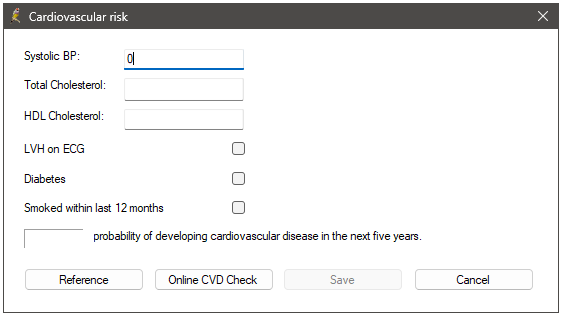
Online CVD Check
The Australian Chronic Disease Prevention Alliance's CVD risk calculator is available in Bp Premier. AusCVDRisk is a risk assessment, communication, and management tool for health professionals. To learn more about how this calculator works, refer to the Australian Guidelines for assessing and managing cardiovascular disease risk.
- From the patient record, select Clinical > Cardiovascular risk. The Cardiovascular risk screen will appear.
- Click Online CVD Check to open a browser window displaying the calculator.
- Enter a value for each Variable, then click Calculate. The Consider Reclassification Factors screen will appear
- If applicable, select reclassification factors that are relevant to the patient. Reclassification factors are most beneficial when an individual's risk level is near the risk threshold.
- To proceed to the results page, click one of the following options: Continue without reclassifying, Reclassify up to intermediate risk, or Reclassify to high risk.
- The CVD Risk results will be displayed, along with information to assist you in discussing the results with the patient, as well as resources promoting healthy habits and behaviours that can help lower the risk.
- Fill in the fields and click Calculate to display the percentage probability the patient has of developing cardiovascular disease in the next five years.
- The CVD Risk results will display the percentage probability the patient has of developing cardiovascular disease in the next five years.
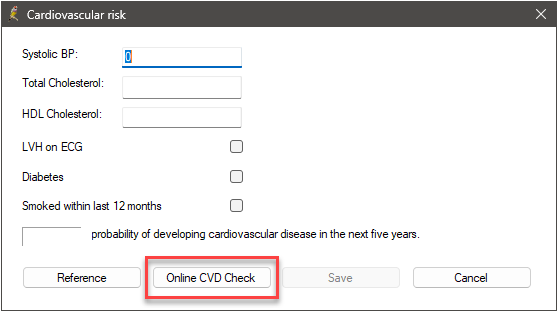


EXAMPLE If the patient is of East Asian ethnicity (Chinese, Japanese, Korean, Taiwanese, or Mongolian), you may consider reclassifying them down a category, or up a category if they have a family history of premature cardiovascular disease.


Results from the Online CVD Check (AusCVDRisk) will not be recorded in Observations > CV Risk; only results from Bp Premier's built-in Cardiovascular risk tool will be shown. Online CVD Check results can be manually recorded in Today's notes.
NOTE In Bp Premier version Orchid SP1 Revision 1 and below, results from the Online CVD Check (AusCVDRisk) cannot be added in Observations > CV Risk; only results from Bp Premier's built-in Cardiovascular risk tool will be shown. Online CVD check results can be manually recorded in Today's notes.
The following provides more information about the calculation logic used by this clinical tool, which may assist in assessing suitability for use at your practice.
Description: The cardiovascular risk tool calculates a percentage probability of developing cardiovascular disease in the next five years, based on measurements of several known risk factors.
Calculation: Prediction equation sourced from Anderson KM et al. Cardiovascular disease risk profiles. American Heart Journal. 1991 Jan;121(1 Pt 2):293-8.
Last updated: 18 March 2024.